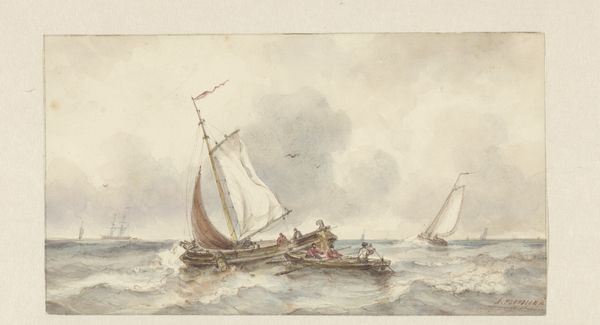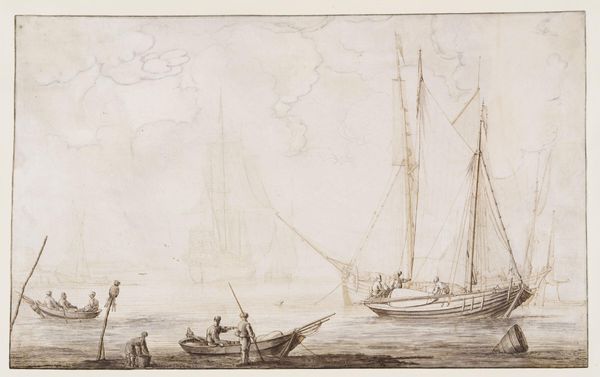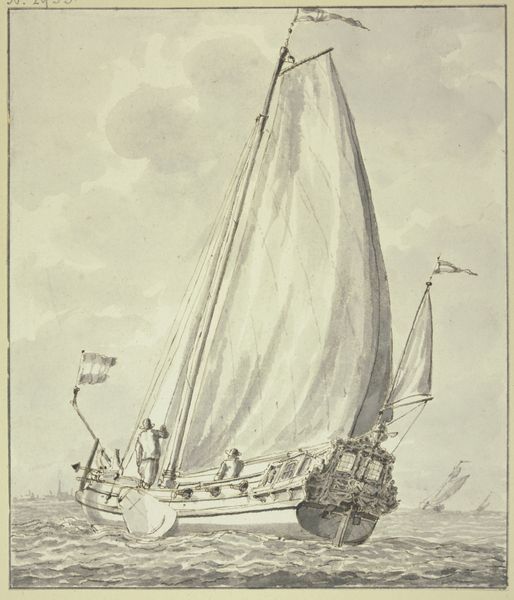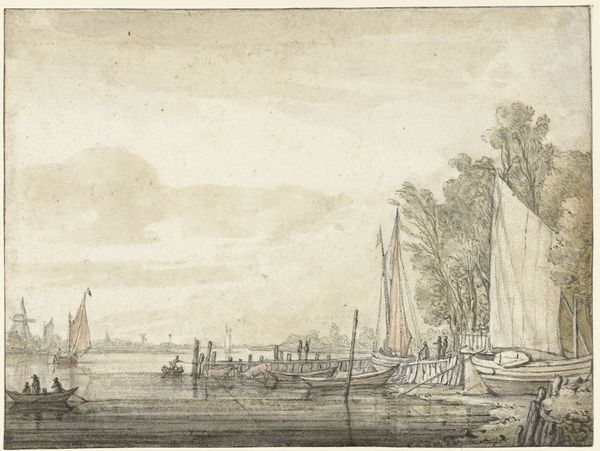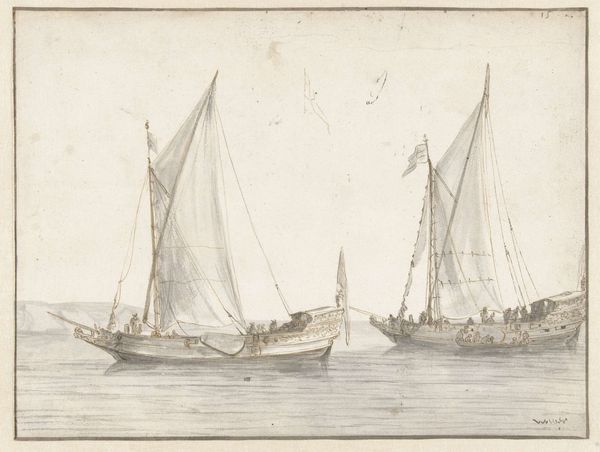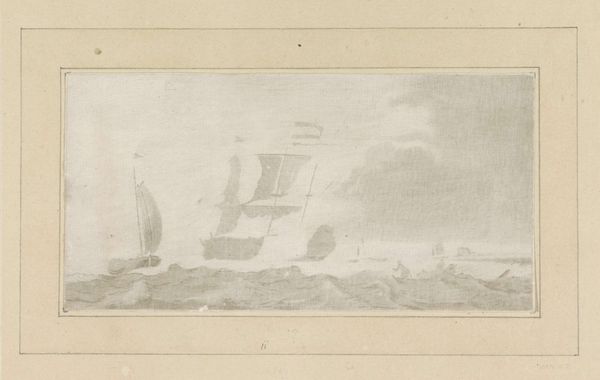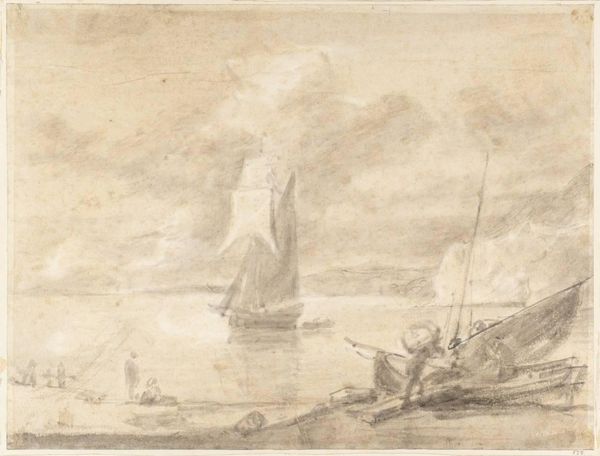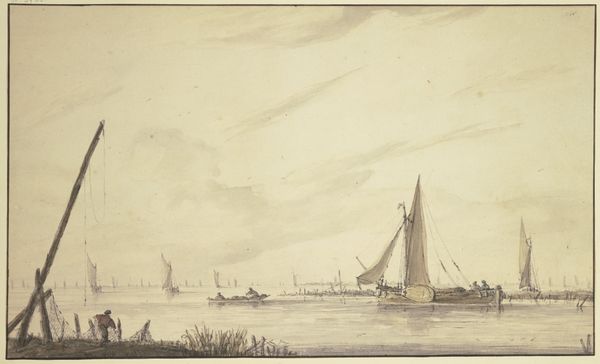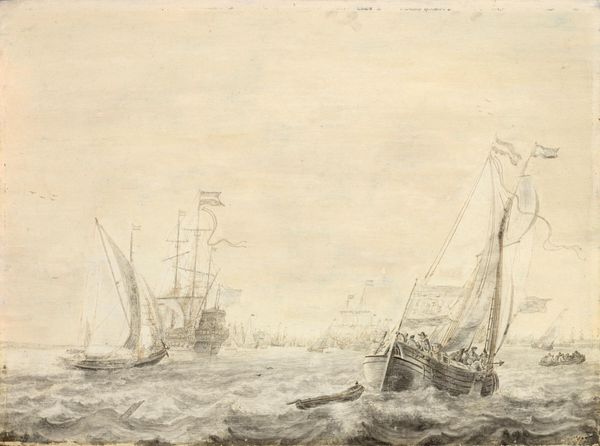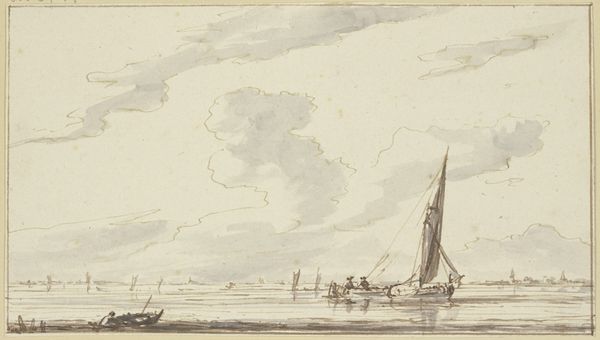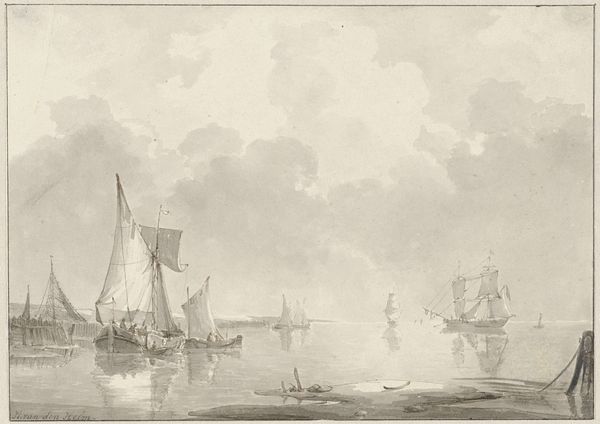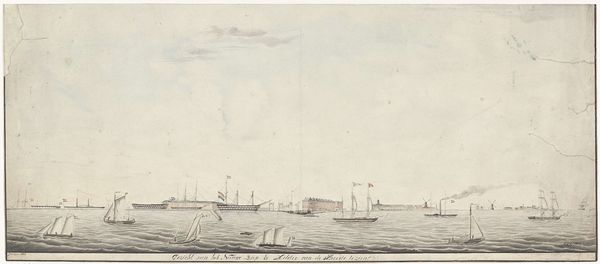
Ontwerp voor twee behangvlakken: rivier met schepen in Nederland c. 1752 - 1819
0:00
0:00
drawing, watercolor, pencil
#
drawing
#
dutch-golden-age
#
pencil sketch
#
landscape
#
watercolor
#
pencil
#
genre-painting
Dimensions: height 328 mm, width 290 mm
Copyright: Rijks Museum: Open Domain
Curator: I find myself drawn to the quiet intimacy of this piece. The work before us, held at the Rijksmuseum, is titled "Ontwerp voor twee behangvlakken: rivier met schepen in Nederland," which translates to "Design for two wallpaper panels: river with ships in the Netherlands," created by Jurriaan Andriessen sometime between 1752 and 1819, a pencil and watercolor drawing on paper. Editor: It's evocative, certainly, a sketch of Dutch maritime life, but there’s also something inherently limited by its elite function as wallpaper. Its lightness almost seems…fragile. What social narratives are present or absent from this river view, who were the ships really for? Curator: Those are valid questions. While the design seems decorative, let’s consider the enduring symbol of the ship. Throughout history, vessels often represent journeys, trade, exploration, and sometimes even the soul’s voyage through life and death. Perhaps Andriessen subtly embedded these layered meanings into what seems like mere scenery. Editor: Perhaps, though the intended location of these images affects my perception; being placed within domestic, wealthy spaces meant they ultimately functioned as visual signals of financial power, literally decorating status. We need to consider where and for whom images were produced and consumed when addressing symbolic potential. The imagery feels inherently biased. Curator: A crucial point, indeed. Yet even in expressing that financial power, it engages cultural memory, reflecting the prominence of Dutch maritime power at its peak, perhaps even instilling a sense of pride or historical awareness within the home's inhabitants, an active relationship beyond a mere aesthetic function. The imagery reinforced specific values, but were those values embraced uncritically? Editor: The very act of selecting such scenes for display in one’s home implies approval of the societal structure that upheld them. These weren't neutral seascapes but affirmations of commercial enterprise inextricably linked to colonialism and the exploitation of resources and peoples worldwide, making the wallpaper designs more potent ideological carriers than they initially appear. Curator: Such complex webs of interpretation underline art's role beyond the merely beautiful. These simple panels echo with profound reflections on power, culture, and enduring visual symbols. Editor: Exactly. Wallpaper it might be, but silent it certainly is not! This design prompts critical inquiries into Dutch society, then and now.
Comments
No comments
Be the first to comment and join the conversation on the ultimate creative platform.
